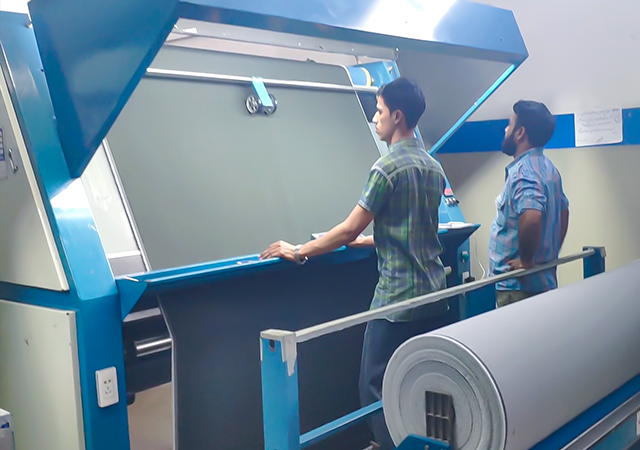Traditionally, identifying defects and irregularities on fabric surfaces during the weaving process relied heavily on human visual inspection. However, as production demands increased, this manual approach became overwhelming for manufacturing workers. To address these challenges and boost efficiency, fabric inspection machines were introduced.
Fabric Inspection Machine
Fabric inspection machines hold immense significance in ensuring flawless fabric output. They excel in defect identification, marking defect locations, and preventing defects during subsequent fabric handling and cutting processes. By streamlining these crucial stages, fabric inspection machines contribute to the production of defect-free fabrics, making them indispensable investments for garment manufacturing factories.

Understanding the types of fabric defects that fabric inspection machines can detect is essential. Here are some common fabric defects:
- Bad Selvage: This occurs when warp ends are too far apart to accommodate the yarn's thickness.
- Broken Ends: These are caused by broken warp yarn during weaving or finishing.
- Loose Warp and Weft: Low tension in warp or weft yarns results in these defects.
- Fuzz Ball: Overly hairy warp yarns can generate fuzz balls, which may appear on the fabric surface.
- Hole: Obvious defects caused by damaged yarns creating openings in the fabric.
- Double End and Double Pick: These defects occur when multiple warp or weft yarns are woven together.
- Cover: Misplacement of colored yarns during weaving can lead to this defect.
- Miss-Selection of Pattern: Random dropping of stitches can alter the pattern design, creating defects.
- Skip Stitch: In knitted fabrics, skipped stitches and floats can form defects.
Fabric inspection is a critical process, whether performed manually or with advanced fabric inspection machines. Its importance lies in preventing defects in the final product. Fabric inspection machines offer several advantages that revolutionize the fabric inspection landscape:
Enhanced Efficiency: Fabric inspection machines automate the rolling and winding of fabric rolls, making it easier to mark defect types and positions during inspection. This automation significantly improves efficiency, enabling factories to tackle production challenges and gain a competitive edge.
Improved Accuracy: Many fabric inspection machines come with electronic defect inspection devices that record lengths and arrange packages automatically. The computing system analyzes defect data statistically, enhancing the detection rate of fabric defects. This improves the integrity of garments and reduces labor and material costs.
By leveraging fabric inspection machines, garment factories can optimize their operations, expedite production, and deliver superior-quality garments. These machines are invaluable assets that elevate fabric inspection to new levels of precision, efficiency, and cost-effectiveness, ultimately transforming the garment manufacturing process.
SUNTECH Textile Machinery emerges as a beacon in this paradigm shift. Renowned for integrating innovation with optimization, the company has solidified its position as a leader in the textile industry. The advanced fabric inspection machine, equipping manufacturers with the tools to boost productivity, trim costs, and excel in today's dynamic marketplace.




